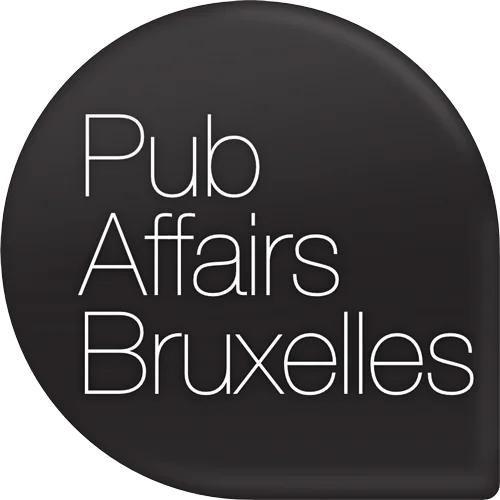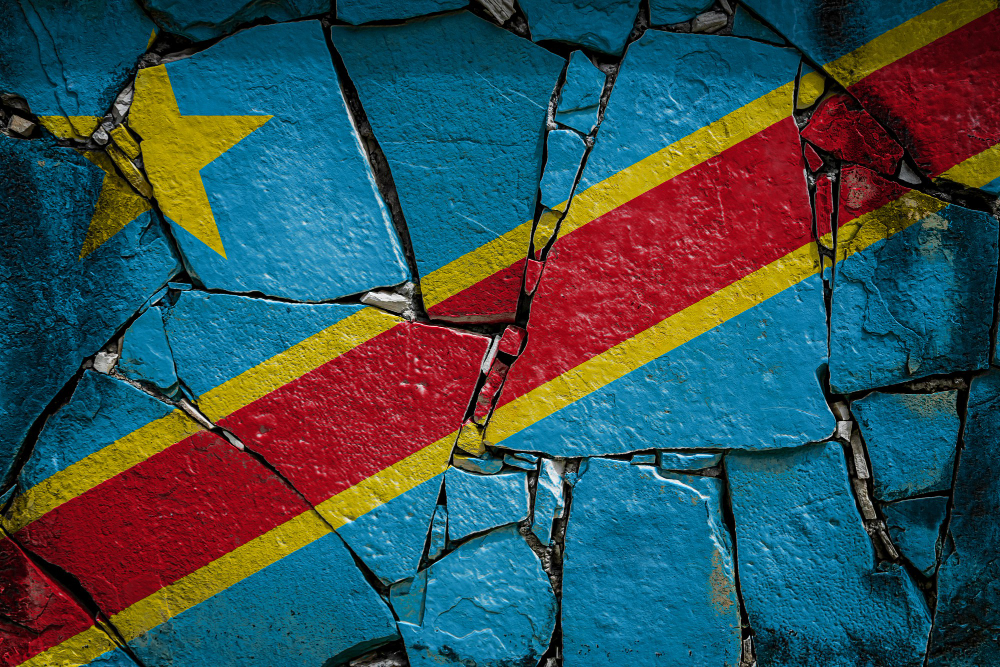The conflict in eastern DRC has been on top of the agenda of last week’s AU summit. Poorva Karkare looks at what the current state of affairs means for regional integration, African peace and security structures and wider EU-DRC relations.
If there is one news item from Africa that has captured attention in recent weeks, it is the rapid advance of the M23 rebel group to take control of both Kivu provinces in the eastern Democratic Republic of Congo (DRC). Last weekend, the African Union’s (AU) Peace and Security Council discussed the situation, voicing deep concerns over the risk of an open regional war, reiterating the need for M23 to disarm and withdraw, and urging the groups involved for reconciliation and open dialogue. Both the DRC and Rwanda presidents did not attend.
The conflict in eastern DRC, home to numerous armed groups among which the M23, is among the world’s most ignored ones. However, it is a powder keg with a long history of geopolitical manoeuvring by regional partners in the Great Lakes and an ambivalent role played by development partners, including the European Union (EU). Beyond the acute conflict situation – which cannot be reduced to a mere ‘conflict mineral’ narrative – what does the current state of affairs mean for regional integration, African peace and security structures and wider EU-DRC relations?
I, along with other colleagues, wrote about the implications of the DRC joining the East African Community (EAC). Our main conclusion? The 2022 EAC accession formalised eastern DRC’s integration into the wider East African region, a process that was already underway, albeit informally. While the membership also offered a potential means to finally address the persistent economic and security woes in eastern DRC, this did not quite materialise.
Regional jostling to find a solution
As the newly elected president (notwithstanding the history of the 2019 elections), Félix Tshisekedi sought closer ties with the EAC – unlike his predecessor Joseph Kabila, who had associated with the Southern African Development Community (SADC). The EAC Regional Force (EACRF) was deployed in November 2022 to tackle the longstanding security situation in eastern DRC, including the resurgence of M23 in 2021. However, tensions soon surfaced between the president and the EAC about the mandate of the EACRF.
Whereas the regional bloc saw the EACRF as a peacekeeping mission facilitating the withdrawal of the armed groups, accompanied by dialogue through the Nairobi Process, president Tshisekedi wanted an offensive approach. As the region’s bloody past and competing interests of the DRC’s immediate neighbours started to complicate an already volatile situation, trust in the EACRF started waning. Though Kenya led the EACRF given its neutrality (Kenya has no proxy groups or vested interests in eastern DRC though there are clear commercial interests), Tshisekedi accused current president Ruto of favouring Rwandan interests. This contrasts with his amité with former president Kenyatta.
Moreover, there are also speculations that Kenya participated in the EACRF in the hopes of inheriting the funding previously allocated to the United Nations Organization Stabilization Mission in the Democratic Republic of the Congo (MONUSCO), allegedly mirroring Uganda’s president Museveni’s move with the AU Mission in Somalia (AMISOM). But when those financial prospects dimmed, so too did the enthusiasm of contributing nations, who found themselves footing the bill.
All of this led to president Tshisekedi asking for assistance from the SADC instead. The SADC Mission in the DRC (SAMIDRC) was thus deployed in December 2023, constituting forces from Malawi, South Africa and Tanzania alongside the Congolese army (FARDC), to counter the security situation in eastern DRC. Just as the EACRF and the Nairobi Process are linked to efforts by the EAC, under SADC, the SAMIDRC was meant to accompany the Luanda Process, under Angolan president João Lorenço, underway since 2022, to facilitate political dialogue between the heads of states of the DRC and Rwanda to diffuse tensions. The August 2024 ceasefire agreement, achieved under this process, offered a glimmer of hope. But talks broke down by December 2024, followed by the rapid advance of the M23, signalling the potential demise of the Luanda Process. Similarly, the fate of the SAMIDRC also hangs in the balance. Their attempt to halt the advance of the M23 has been unsuccessful, with reports of Malawi’s potential troop withdrawal.
Another complicating factor, as our previous research has shown, is that political personalities, rather than the institutions they represent, shape regional integration in Africa. The personal spat between Tshisekedi and Kagame, or Ruto’s arrival flipping Kenya’s perceived role in the EACRF, or Kagame lashing out at Kenya’s Kenyatta for the Nairobi Process, Angola’s Lorenço for the Luanda Process, and, more recently, South Africa’s Ramaphosa, all point to this phenomenon.
On paper, the approaches of the two regional economic communities (RECs) seem complementary, though in practice, of course, there is clear competition in terms of who wins the ear of the DRC’s president and eventually can claim the mantle of regional peacemaker. It is important to highlight that at the heart of the discord is a fundamental disagreement – Rwandan president Paul Kagame’s insistence that president Tshisekedi engage in a dialogue with the M23 clashes head-on with the latter’s vehement refusal to do so.
African solutions for African problems?
The recent flare in violence has led to summitry at different levels; the DRC is member of four out of eight RECs that make the building blocks of the AU namely the EAC, SADC, the Economic Community of Central African States (ECCAS) and Common Market for Eastern and Southern African (COMESA).
At the joint EAC-SADC summit in Tanzania on 8 February 2025, leaders asked for the “lifting of Rwanda’s defensive measures/disengagement of forces from the DRC”, calling for merging the Luanda and Nairobi processes. This suggests that the two regional blocs could be working towards a common solution. Interestingly, at an emergency meeting of the ECCAS one day earlier, leaders “strongly condemn the M23 armed group supported by Rwanda and call upon them to immediately end their offensive.” This suggests some degree of ‘forum shopping’ by president Tshisekedi to get the strongest of condemnations against Rwanda. But ultimately, the resolution of the conflict is likely to boil down to a dialogue between the warring parties, which, notwithstanding the reasons behind this difference in stance, has emerged as a major fault line in the peace process.
One may ask, what of the African Union? The AU Peace and Security Council held an emergency meeting to address this crisis on 28 January and further discussed the conflict during the AU summit two weeks later, but questions remain about what role Addis Ababa can play. Moreover, at the EAC-SADC summit, outgoing president Moussa Faki was asked to leave the room when the sensitive discussions were taking place behind closed doors.
Even more, Tshisekedi himself has not attended any of the above regional summits in person, choosing instead to attend discussions at the Munich Security Conference, from which he had to return early given M23 advances towards Bukavu. This shows either a lack of trust in the continental institution or simply in its ability to truly bring ‘African solutions to African problems’. Certainly, the newly elected chairperson of the AU Commission, Djibouti’s Mahmoud Ali Youssouf whose focus will be on peace and security, will have much on his plate as he seeks to grapple with the situation in eastern DRC.
Where does the EU stand?
Another angle is the role of external partners, especially the EU. Whereas the bloc used its leverage against Rwanda back in 2012, it has not done so now, apart from a statement expressing concern, even though Rwanda’s support to the M23 is much more significant. Why is this?
Perhaps part of the answer is that Rwanda has made itself useful, sometimes indispensable a partner, to the EU. A stable and peaceful country that has used development assistance productively, despite accusations of violations of human rights and democratic freedoms, the EU has invested money under the Global Gateway, and even signed a controversial partnership agreement on critical raw materials (though it has been temporarily suspended, and the European Parliament also seeks a freeze on aid to the country). Rwanda’s effective armed forces have also served in peace operations in other African countries. The EU in fact made grants worth $43 million to the Rwandan Defense Forces (RDF) for their operations in Mozambique under the European Peace Facility despite accusations of the RDF forces also being involved in the current eastern DRC conflict. While these grants certainly have shenanigans on the EU side, it is important to consider Rwanda’s positioning.
Meanwhile, the DRC, with decades of underinvestments in its army (FARDC), has faced several defeats by an army a fraction of its size (FARDC = 120,000 against M23/RDF = 10,000), despite the assistance from (then) the EACRF, (now) the SAMIDRC, but also mercenaries and local militias, and even a security cooperation agreement with Russia which has raised some concerns in the EU given Moscow’s growing influence in the region.
Despite this, the country is unlikely to completely break relations with the EU as they continue to provide a cloak of outsiders (in this case Rwanda, and the EU’s support to it) being at the root of the DRC’s misfortunes. Moreover, with his fragile base, the president cannot afford to alienate the West (especially the US). These considerations are key in another geopolitical theatre – the much talked-about Lobito corridor. Watch this space for an upcoming paper which will look at the corridor in more detail!
About the author:
Poorva Karkare is a policy officer at ECDPM working on issues of industrialisation and regional integration in Africa with a political economy lens.


